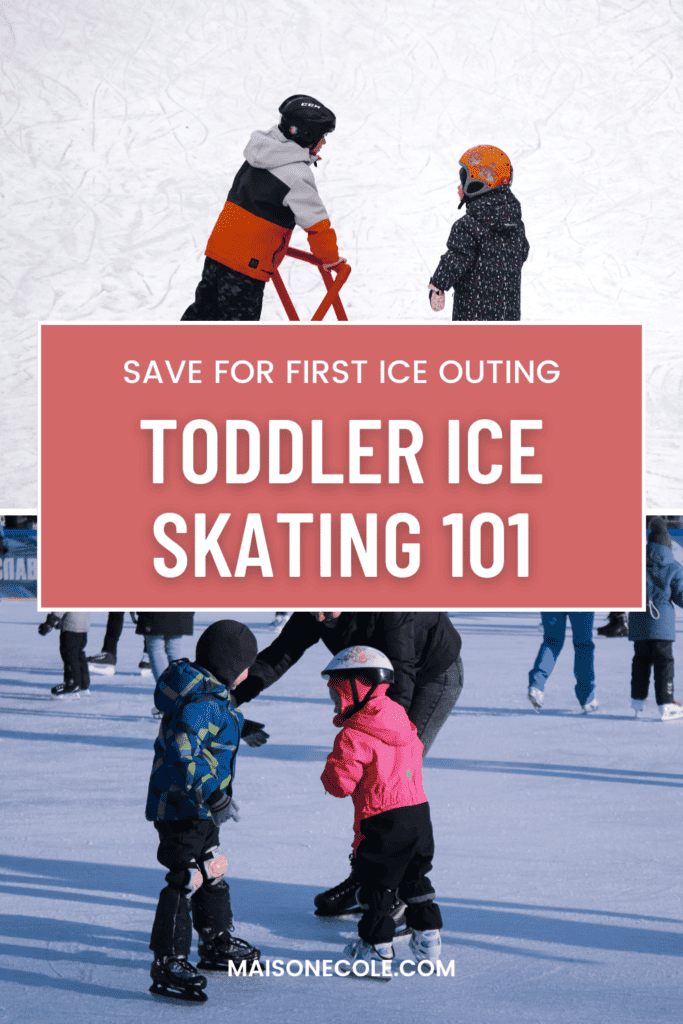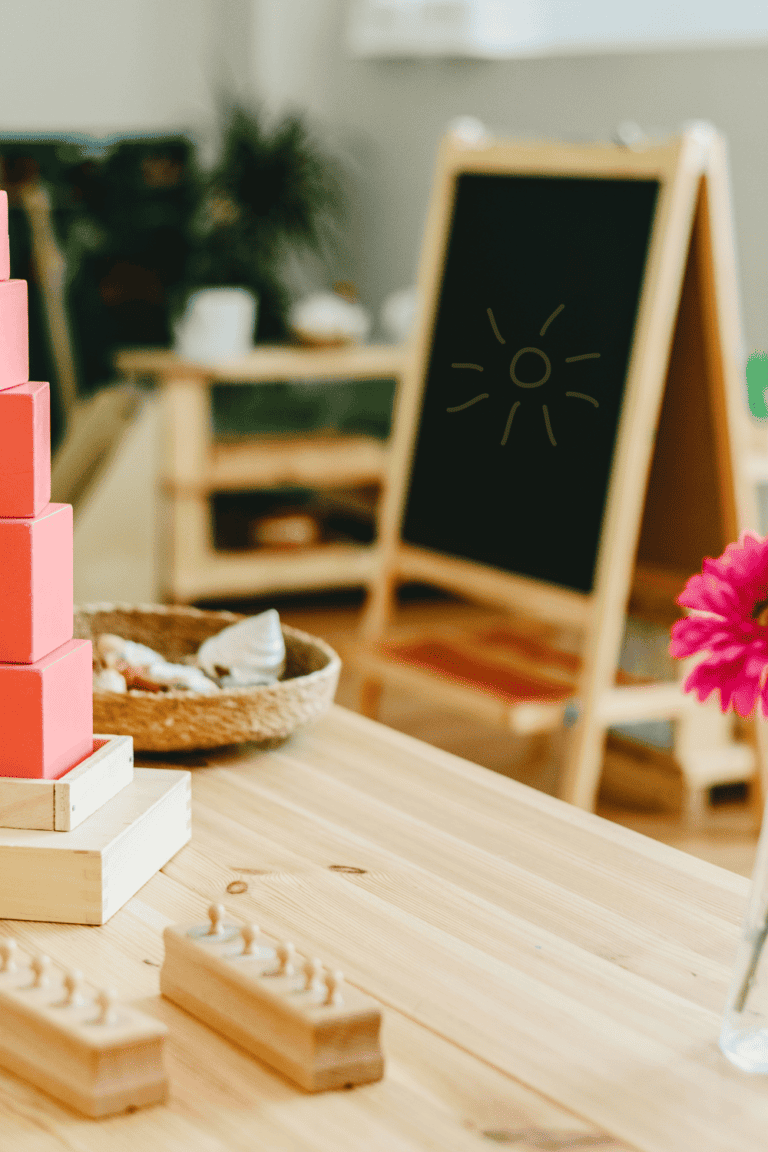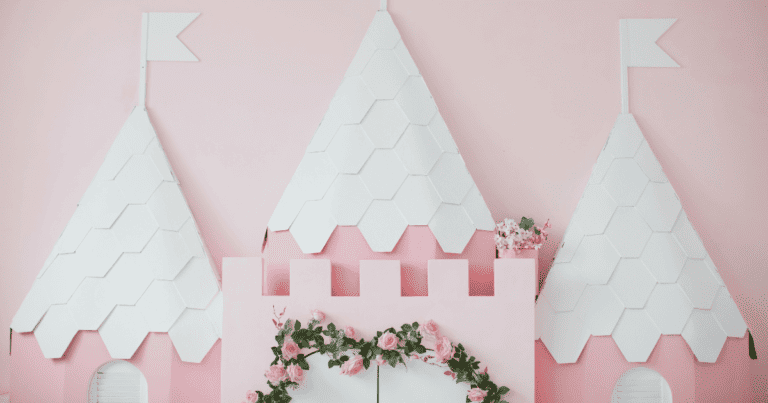Toddler Ice Skating 101| How to Teach a Toddler to Ice Skate
This post is all about how to teach a toddler to ice skate.
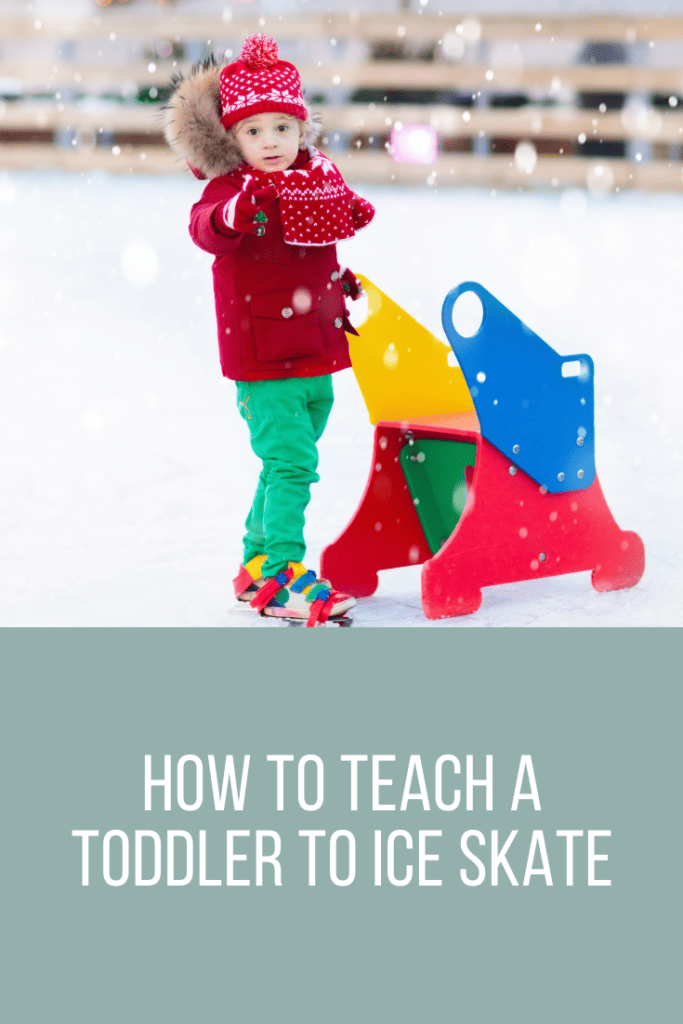
Taking your toddler ice skating is an adventure full of fun and challenges. This post is packed with simple tips on how to teach your toddler to ice skate, making those first slippery steps enjoyable and safe.
I remember taking my three years old daughter to the ice rink for the first time. Her excitement at discovering ice skating was contagious. We started indoors, and she absolutely loved it. Now, I’m looking forward to taking her outside when it gets colder.
Whether you’re indoor or braving the outdoor rinks, this post is all about how to teach a toddler to ice skate– a guide to help you and your toddler glide into this new experience with confidence and joy.
This post is all about how to teach a toddler to ice skate.
How to Teach a Toddler to Ice Skate
Ideal age for ice skating
Typically, toddlers are ready to start learning ice skating around ages three to four, but it truly depends on their individual development. Look for signs of good balance and coordination, along with an eagerness to try new activities.
How Can I Tell If My Toddler Is Ready?
Determining if your toddler is ready to start ice skating involves observing their balance and coordination skills, which are crucial for a safe and enjoyable experience on the ice. Typically, children around the ages of three to four show developmental readiness, but it varies with each child. Here’s how you can assess these skills and foster them at home:
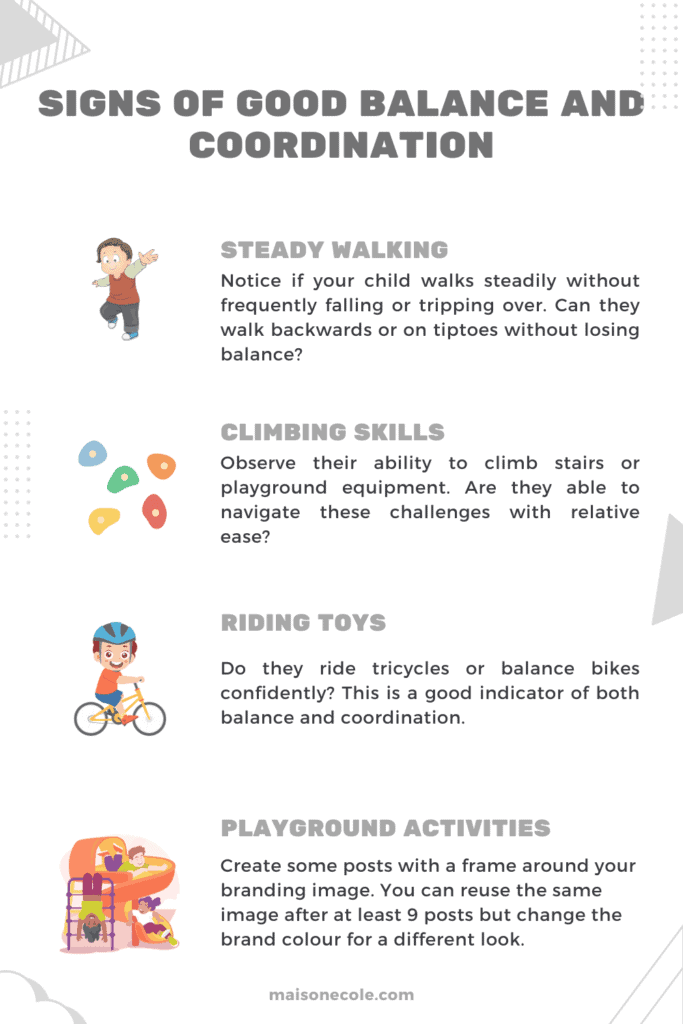
Signs of Good Balance and Coordination
- Steady Walking: Notice if your child walks steadily without frequently falling or tripping over. Can they walk backwards or on tiptoes without losing balance?
- Climbing Skills: Observe their ability to climb stairs or playground equipment. Are they able to navigate these challenges with relative ease?
- Riding Toys: Do they ride tricycles or balance bikes confidently? This is a good indicator of both balance and coordination.
- Playground Activities: Can they navigate a balance beam at the playground, even if it’s a low one? This requires both balance and the ability to coordinate movements.
Activities to Try at Home
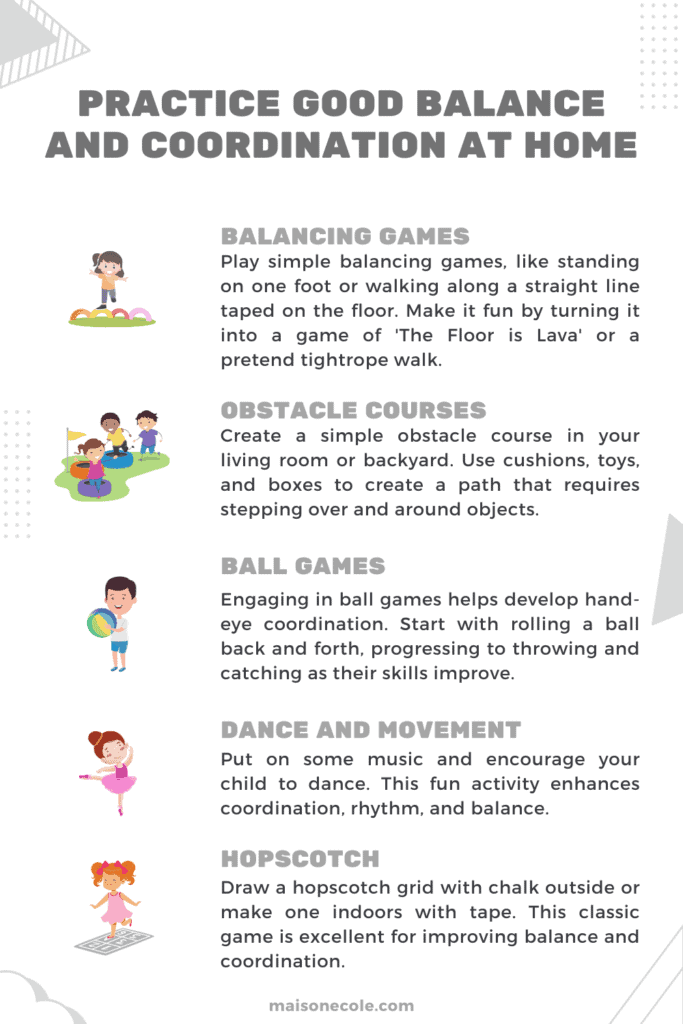
What Are the First Skating Skills My Toddler Should Learn on Ice?
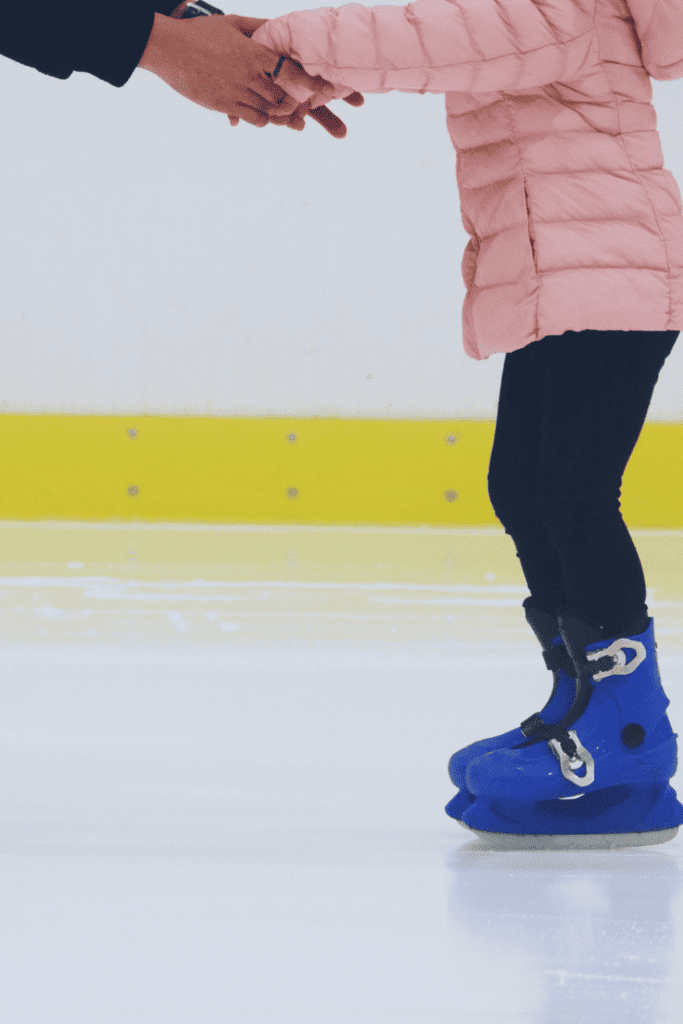
When teaching toddlers to ice skate, it’s important to start with basic skills that match their developmental stage. Here are the key skills to focus on:
- Learning to Stand Up on Ice: Before they start moving, toddlers need to learn how to stand up on the ice. This teaches them how to find their balance on the slippery surface.
- Balancing on Skates: Once standing, the next step is learning to maintain balance while wearing skates. Skates feel different from regular shoes due to the blade, and getting used to this new sensation is crucial.
- Marching in Place: Teach your child to march on the spot on the ice. This simple movement helps them get used to moving their feet in skates and builds confidence in their ability to move on the ice.
To make these activities more engaging for a toddler, try turning them into a fun game. For instance, while practicing marching, you can pretend you’re both penguins waddling across the Antarctic. This playful approach makes learning less intimidating and more enjoyable for young children.
How to Teach a Toddler to Ice Skate| Video
Core Skills in Ice Skating

Balance and Posture: The Key Foundations
Good balance and posture are the backbone of ice skating. Teach your toddler to bend their knees slightly and keep their arms out for balance. This ‘ready position’ helps them stay upright and feel more stable on the ice. You can practice this posture off the ice too, turning it into a game like pretending to be a superhero in a strong stance.
Basic Movements: Gliding and Stopping
Once your toddler is comfortable with their balance, introduce them to basic gliding. Hold their hands and encourage them to push off gently with one foot, then the other, to start moving. Stopping is just as important, so show them how to gently use their skate’s edge to slow down and stop. Make sure to demonstrate these movements slowly and repeat them often.
Safety First: Preparing for Ice Skating
Choosing the Best Ice Skates for Toddlers
When it comes to selecting the best ice skates for toddlers, adjustable toddler skates are an excellent choice. These skates are not only practical, accommodating your child’s growing feet and saving you the expense of purchasing new ones each season, but they also offer a comfortable and supportive fit as your little one’s skills develop.
It’s vital to pick toddler ice skates that provide solid ankle support. This support is crucial in helping your toddler maintain balance and prevent injuries. Ensure the skates fit snugly around their foot, but also allow enough room for thicker socks, often needed in chilly ice rinks. Achieving this balance between a snug fit and enough room for comfort is key to your toddler’s enjoyment and success in ice skating.
Sizing Toddler Ice Skates Accurately
To ensure a proper fit for toddler skates, have your child wear the socks they’ll be skating in and then measure their foot inside the skate. There should be about a thumb’s width of space from their toe to the front of the boot. This space is essential as it ensures the skate isn’t too tight, allowing for proper circulation and space for their feet to grow.
Properly Lacing Toddler Skates
Securing toddler ice skates correctly is crucial for safety and comfort. The laces should be tight enough to offer ample support but not so tight as to restrict movement or cause discomfort. Start lacing from the bottom, working your way up and ensuring even tension. A good practice is to check with your child to ensure they feel snug but comfortable, without any pinching.
The Importance of Safety Equipment
Beyond finding the best ice skates for toddlers, it’s essential to invest in properly fitted safety equipment. A helmet is a must to protect your toddler from falls. Additionally, knee pads, elbow pads, and wrist guards are important to cushion any falls and provide comprehensive protection. Teaching your toddler about the importance of each piece of safety equipment is a great opportunity to instill safety awareness from an early age.
Building Confidence
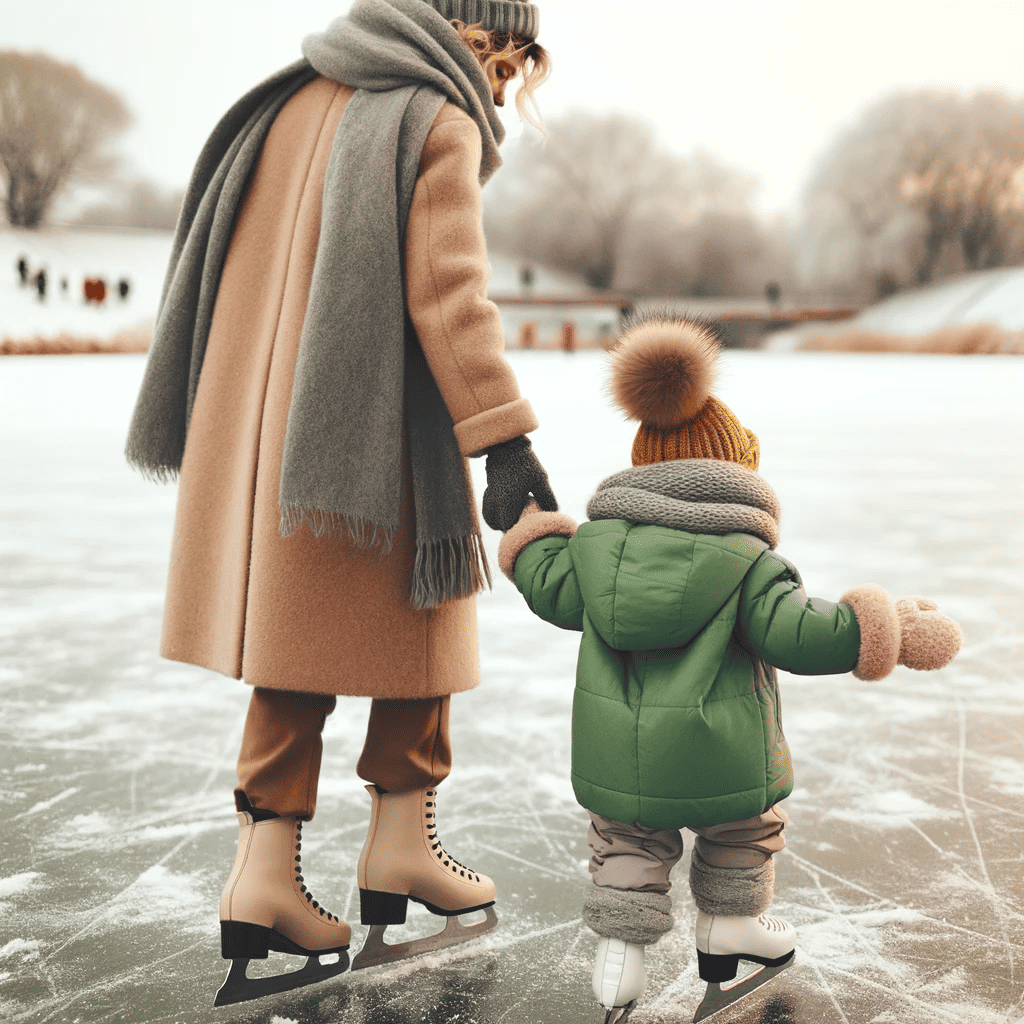
Creating a Positive and Fun Environment
Your attitude on the ice is everything. Approach each skating session with a smile and a sense of adventure. If your toddler sees you enjoying the experience, they’re more likely to feel relaxed and excited about learning. Use praise generously and focus on the fun aspects of skating
Simple Exercises to Get Comfortable
Start with basic exercises to help your toddler feel more at ease on the ice. Encourage them to stand still and feel the ice beneath their skates. Then, progress to marching in place, which helps with balance and coordination. You can make it fun by singing a song or counting steps together. Gradually, let them glide a little with your support, always ensuring they feel safe and secure.
Setting Realistic Expectations
It’s important to set realistic goals and be patient with your toddler’s progress. Every child learns at their own pace. Celebrate the small milestones, like the first time they stand unassisted or glide a short distance. Keep the atmosphere light and encouraging – remember, the goal at this stage is to cultivate a love for skating and build basic coordination.
From Fear to Fun: Tips on Encouraging Toddlers in Ice Skating
Encouraging Your Toddler Through Challenges
It’s natural for toddlers to feel hesitant or even a bit scared at first. Offer lots of encouragement and praise their efforts, not just their achievements. If they fall, laugh it off and show them how to get up safely. Your positive reaction to challenges will teach them that it’s okay to make mistakes and that trying is what matters most.
Celebrating Small Victories
Celebrate every little success, whether it’s managing to stand on their own, taking a few steps, or gliding a short distance. These victories, no matter how small, boost your toddler’s confidence and encourage them to keep trying. You can even create a little victory dance or cheer to make these moments more special.
Effective Techniques for Teaching Ice Skating to Toddlers
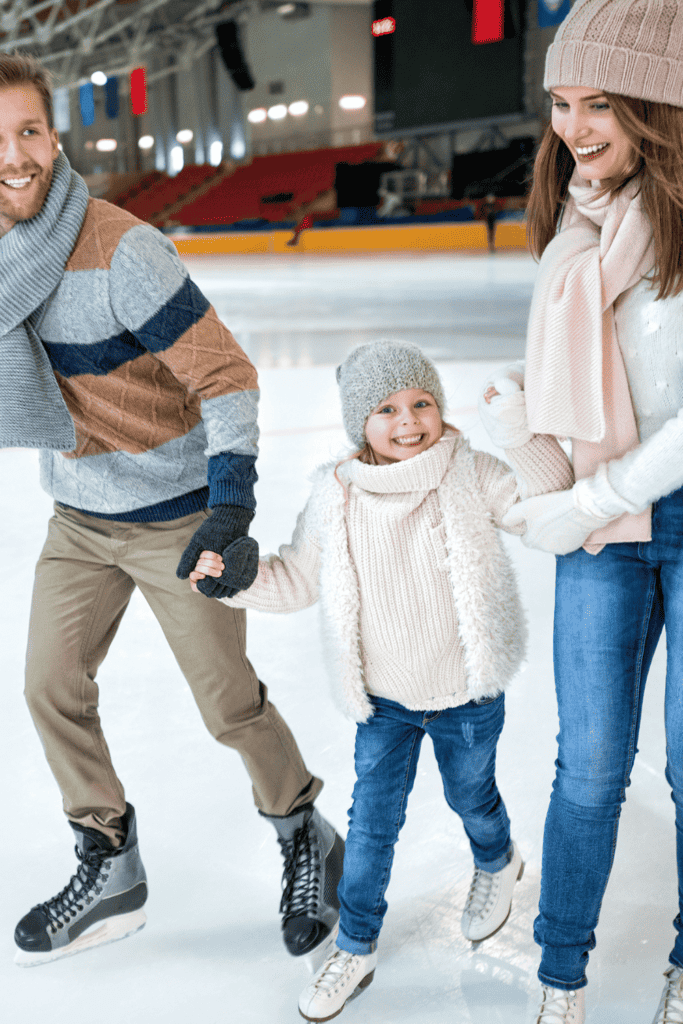
Hand-in-Hand Skating: A Guide for Parents
Skating hand-in-hand with your toddler is not just about physical support, it’s also about emotional reassurance. It helps them feel secure as they learn and provides a great way for you to guide them through new movements. As they become more confident, gradually lessen your grip, allowing them to explore more independently while still knowing you’re right there if needed.
Using Props and Aids for Easier Learning
Props and aids can be incredibly helpful in teaching skating skills. A soft toy can be used as a focal point for your child to skate towards, helping with direction and purpose. Skating aids, like cones, can be set up to create a simple obstacle course, adding an element of challenge and excitement to their learning.
Dealing with Falls: Teaching Resilience
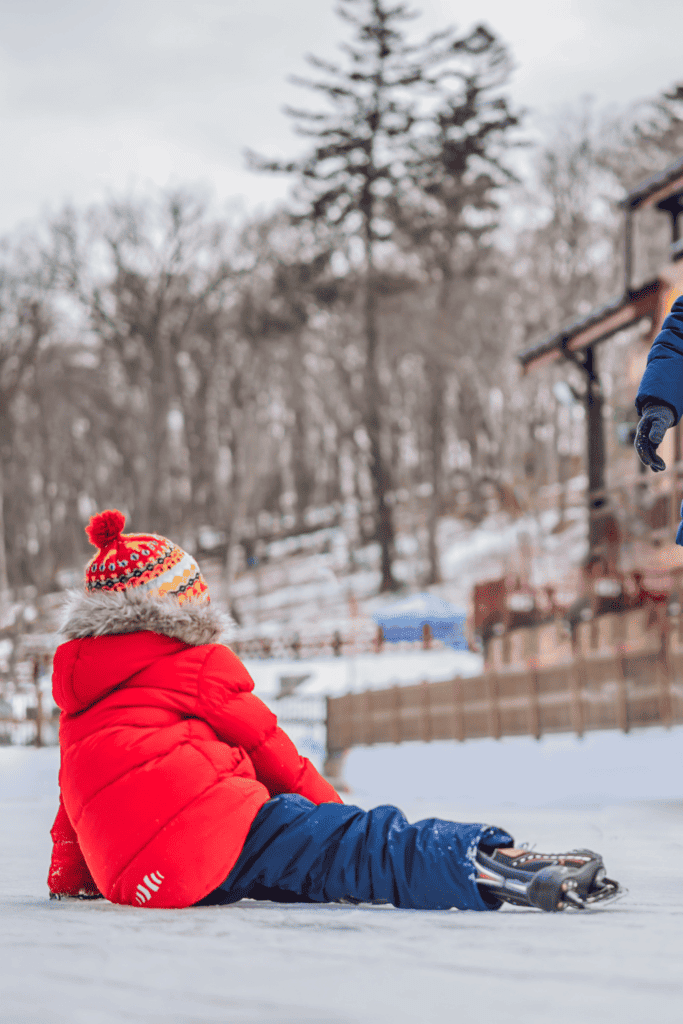
Safe Falling Techniques for Toddlers
Falls are a natural part of learning to skate, and teaching your toddler how to fall safely is crucial. Show them how to bend their knees and fall sideways to avoid falling backward. Practicing on a soft surface off the ice can help them get comfortable with the idea. Remind them that even experienced skaters fall, and it’s a normal part of learning.
Turning Falls into Learning Opportunities
Each fall is an opportunity to teach resilience. Encourage your toddler to get back up with a smile and try again. Praise their efforts to stand up and continue, reinforcing the idea that perseverance is more important than perfection. This helps build a positive mindset, not just in skating but in all aspects of life.
Advancing Skills: Guiding Toddlers to Better Ice Skating
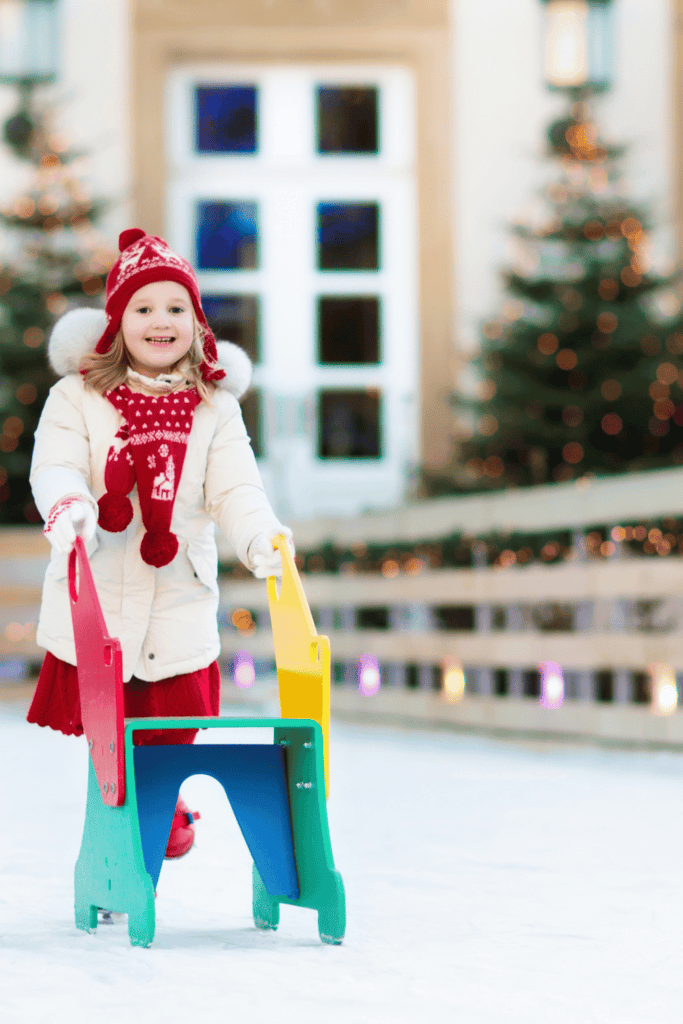
Utilizing Ice Skating Training Aids
As your toddler gains confidence with the basics of skating, introducing an Ice Skating Training Aid can be a game-changer. These aids, often designed as fun characters or shapes, provide support and balance, allowing your child to focus more on their skating movements. They are especially useful when transitioning from skating with parental support to independent skating. The aid serves as a stable buddy on the ice, offering a sense of security while they practice their strides.
Building Confidence with a Training Aid
Using a training aid can significantly boost your toddler’s confidence on the ice. It allows them to experiment with moving forward, turning, and even stopping, all while having a support system to hold onto. This independent practice is crucial for developing their skating skills at their own pace.
Gradual Transition to Independent Skating
Once your child feels comfortable and stable with the training aid, you can gradually encourage them to skate short distances without it. Start by having them skate from you to the training aid, gradually increasing the distance. These small steps towards independence are vital in building their confidence and skill on the ice.
When to Take a Break: Recognizing Signs of Tiredness
Understanding Your Toddler’s Limits
It’s important to be attuned to your toddler’s energy levels and mood. Signs of tiredness can include decreased coordination, loss of interest, or just stating they’re tired. It’s crucial to take breaks before they get too fatigued, as tired skaters are more prone to falls and frustration. Encourage rest periods, and use this time for some off-ice bonding, like discussing what they enjoyed most about the session.
Importance of Rest and Recovery
Rest and recovery are as essential as the practice itself. They allow your child’s muscles to relax and rebuild, preventing overexertion. Ensure your toddler gets plenty of sleep the night before a skating session and has quiet time after it. This not only aids physical recovery but also helps in processing and retaining new skills learned.
Warm-Up and Cool-Down Routines for Tiny Skaters
Pre and Post Skating Exercises for Toddlers
Incorporate simple warm-up exercises before getting on the ice, like stretching or jogging in place, to prepare their muscles for the activity. After skating, cool-down exercises like gentle stretching can help prevent muscle soreness. These routines are vital for developing good exercise habits and keeping their little bodies safe and healthy.
Keeping Little Muscles Safe and Healthy
Remember, young muscles are still developing, so gentle care is needed. Encourage your toddler to listen to their body and communicate if something feels uncomfortable. Regular warm-up and cool-down routines help minimize the risk of injuries and ensure a more enjoyable skating experience.
Interactive Ice Skating Games for Toddlers
Fun and Educational Ice Skating Games
Introducing games into the skating experience can be a fantastic way to teach new skills while keeping your toddler engaged and entertained. Simple games like ‘Red Light, Green Light’ teach control and stopping, while ‘Simon Says’ can incorporate skating movements like marching. These games not only make learning fun but also help develop essential skating skills in an enjoyable and relaxed environment.
Engaging the Family in Ice Skating Activities
Getting the whole family involved in ice skating can turn practice sessions into cherished family time. Siblings can join in the games, making them more exciting. This not only makes the experience more enjoyable for your toddler but also creates wonderful family memories.
Nutrition and Hydration Tips for Young Skaters
Energizing Snacks for Active Toddlers
Active little bodies need fuel. Opt for healthy, energizing snacks before and after skating sessions. Foods like bananas, yogurt, or whole-grain crackers are great options. These snacks provide the necessary energy without being too heavy.
Staying Hydrated During Ice Skating Sessions
Hydration is key, even in colder environments like an ice rink. Ensure your toddler drinks water before, during, and after skating. A fun water bottle can encourage them to drink regularly, keeping them hydrated and ready for all the skating fun.
Adapting to Outdoor vs Indoor Ice Skating
Key Differences and How to Prepare
Skating outdoors versus indoors can offer different experiences. Outdoor rinks, often set in picturesque environments, can be more exhilarating but also colder and subject to weather changes. Dress your toddler in layers and check the weather beforehand. Indoor rinks offer a more controlled environment, which can be easier for beginners.
Embracing the Beauty of Outdoor Skating
If you have access to outdoor skating, embrace its unique charm. The fresh air and natural scenery can enhance the skating experience. Just remember to protect your toddler’s skin with sunscreen and keep them hydrated, as the excitement and activity can sometimes make us forget these essentials.
Seasonal Ice Skating: Enjoying Ice Skating Year-Round
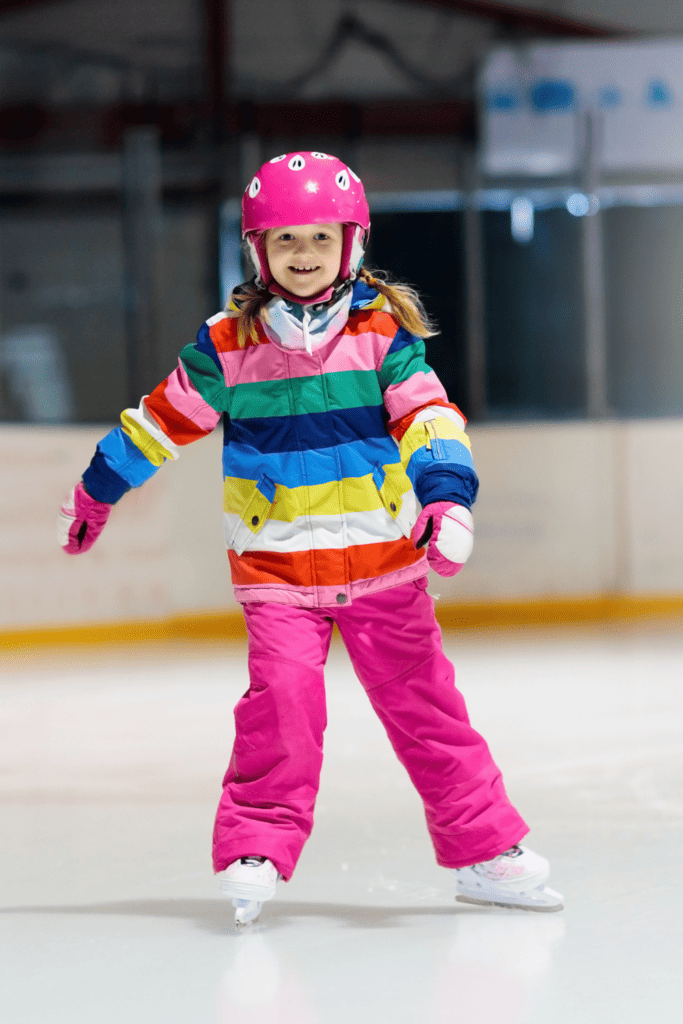
Finding Indoor Rinks During Warmer Months
Don’t let the warm weather put a damper on your toddler’s ice skating progress. Many communities offer indoor ice rinks that operate year-round. These venues provide a consistent, controlled environment for your child to continue honing their skills, regardless of the season.
Embracing Winter Skating Opportunities
Winter brings the magic of outdoor ice skating. If you live in a region where ponds or lakes freeze over, it can be an enchanting experience for your toddler. Always ensure the ice is safe and professionally assessed before skating. Winter also often means public rinks are open, offering a festive atmosphere that can add to the excitement and joy of skating.
Exploring Structured Skating Classes for Toddlers
When to Enroll in Skating Classes
As your toddler grows more comfortable on the ice and shows an increased interest in skating, you might start thinking about structured skating classes. These classes, often available for children as young as three or four, can be a great way to introduce them to more formal training. Figure skating and hockey programs for young children typically focus on fun and foundational skills, tailored to their age and development level.
Benefits of Professional Skating Classes
Enrolling your child in a professional skating class can offer numerous benefits. Experienced instructors provide structured training that focuses on refining techniques and gradually introducing new skills. These classes are designed to be age-appropriate and often include group activities, making learning more enjoyable and socially enriching for your child.
Finding the Right Balance
While the structured environment of a skating class can be highly beneficial, it’s important to keep a close eye on how your child is responding. The goal is to nurture their interest in skating without overwhelming them. Look for programs that emphasize fun and enjoyment as much as skill development. Regular conversations with your child about their class experiences can give you valuable insights into how they’re feeling and whether the balance between learning and fun is being maintained.
You may also like
BRRR-ILLIANT! DIVE INTO THESE WINTER HOMESCHOOL ACTIVITIES FOR ULTIMATE COZY LEARNING!
EASY WINTER CRAFTS FOR PRESCHOOLERS: FUN & CREATIVE IDEAS FOR LITTLE HANDS
25 DAYS OF FUN: WINTER CRAFTS FOR PRESCHOOLERS TO SPARK JOY & LEARNING!
Conclusion
Incorporating ice skating into homeschooling offers a unique blend of physical education and personal development. It enhances physical fitness, coordination, and teaches important life lessons like perseverance. Plus, it’s a fun, active break from academic learning that also encourages social interaction and practical learning.
This post was all about how to teach a toddler to ice skate.
Pin this post to remember for later!
